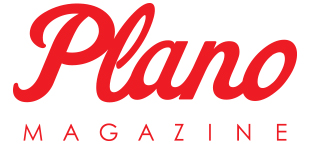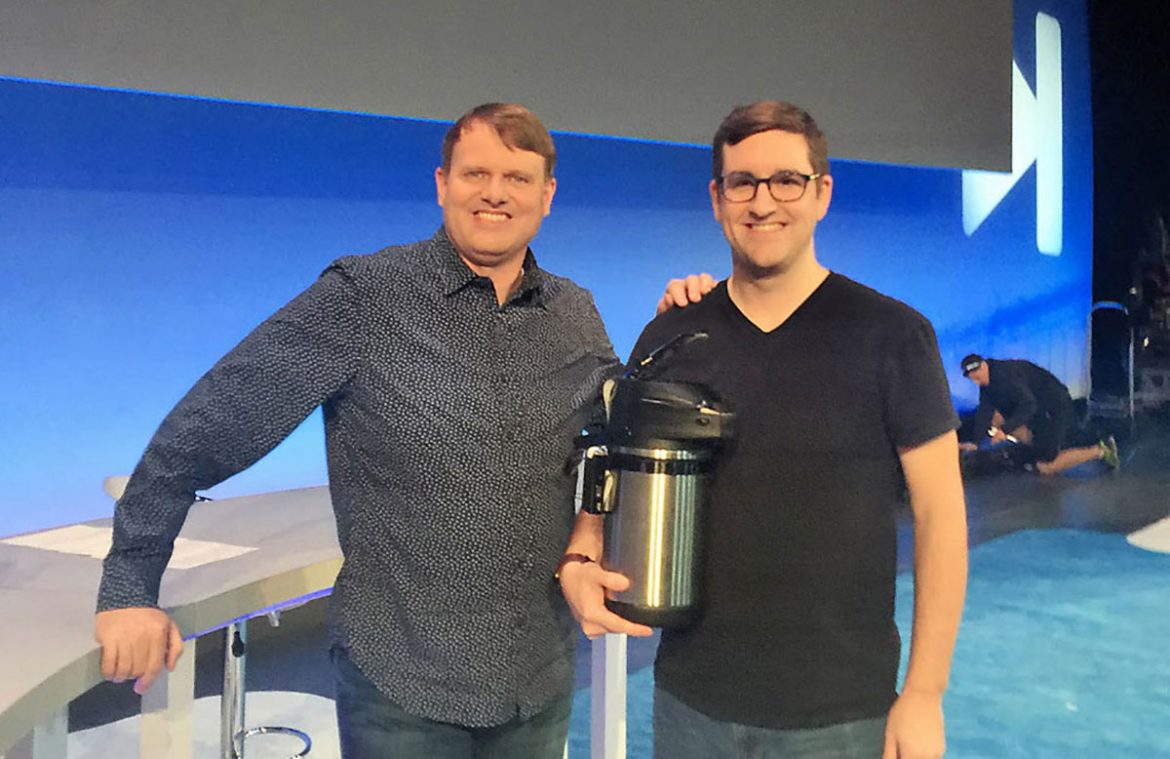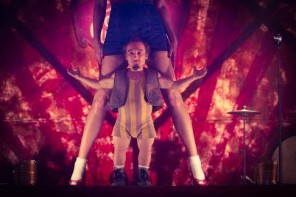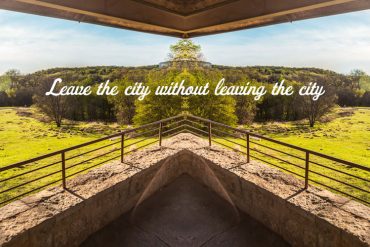Someone took that last cup of coffee and didn’t bother to refill the pot. That’s a problem any coffee-lover faces, but it now has a solution from Tim Sporcic and Daniel Fairley. Both engineers at Research Now’s Plano office, the guys won second place and a prize of $10,000 at the AT&T 2017 Developer Summit Hackathon Invitational this month in Las Vegas.
The year’s hackathon theme was Internet of Things (IoT). “Tell me what the problem is, what your solution is and show me,” Daniel says, on the art of demoing. The duo’s project was CoffeeWatch, a coffee pot that tracks (and then shames) whoever took the last cup.

Guys, what inspired your project?
Daniel: One of our coworkers came up with the idea of a device that tells when the coffee pot’s empty, and we started bouncing off ideas. Someone said, ‘What if it takes your picture?’ We thought that’d be funny – to post it on Twitter and shame them. We knew this is it. This is what we’re building.
Tim: Daniel and I are tricksters – we like going for a humorous approach. Hackathons are the place to have fun. We go in with something fun we can do in a day and that can demo well. It comes down to, can you produce it and can you demo it?
How do you come up with your ideas?
T: I learned to not let my own prejudices get in the way of the idea and just go with something fun.
How many people entered the hackathon?
T: There were over a 1,000 participants in the nationwide competition.
What was the experience in Vegas like?
T: A different experience. We’ve done a lot of hackathons, but this was the first time we had the chance to do one nationally. Local hackathons are pretty much the same, but Vegas was AT&T’s big developer showcase event. We had to sit backstage in a green room. There was makeup and lots and lots of repetition and tuning.
D: We had to develop a set script of what we were going to say because they had teleprompters.

What will you do with the $10,000 prize?
T: I want to learn how to play the guitar. I’m trying to get my daughter into music, too.
Do you have future plans for the project?
D: We never plan on finding manufacturers. We’re definitely going to keep the coffee pot around the office. We talked to Microsoft at the conference, and they had some facial recognition software that works better than ours. So we might swap that out and try to put real coffee in it and stick it on the sales floor where they don’t know about it and see what happens. That’s the long-term vision of the project. It probably won’t go further than that.
What was the hardest part about this hackathon?
T: I had never worked with Amazon Echo before. That’s just a whole different programming model, how to make it work. There are a lot of examples on the web on how to do it with JavaScript, but we wanted to use Java.
What do you aim for at every hackathon?
T: To learn something new. I use this as a chance to do new things.
What was different about your idea?
D: This is something goofy, and it works. Coming up with a clever solution is definitely the most fun part. We were confident that what we had built resonates well with people who work anywhere and have a coffee pot.
Read more about the AT&T 2017 Developer Summit Hackathon Invitational here.





